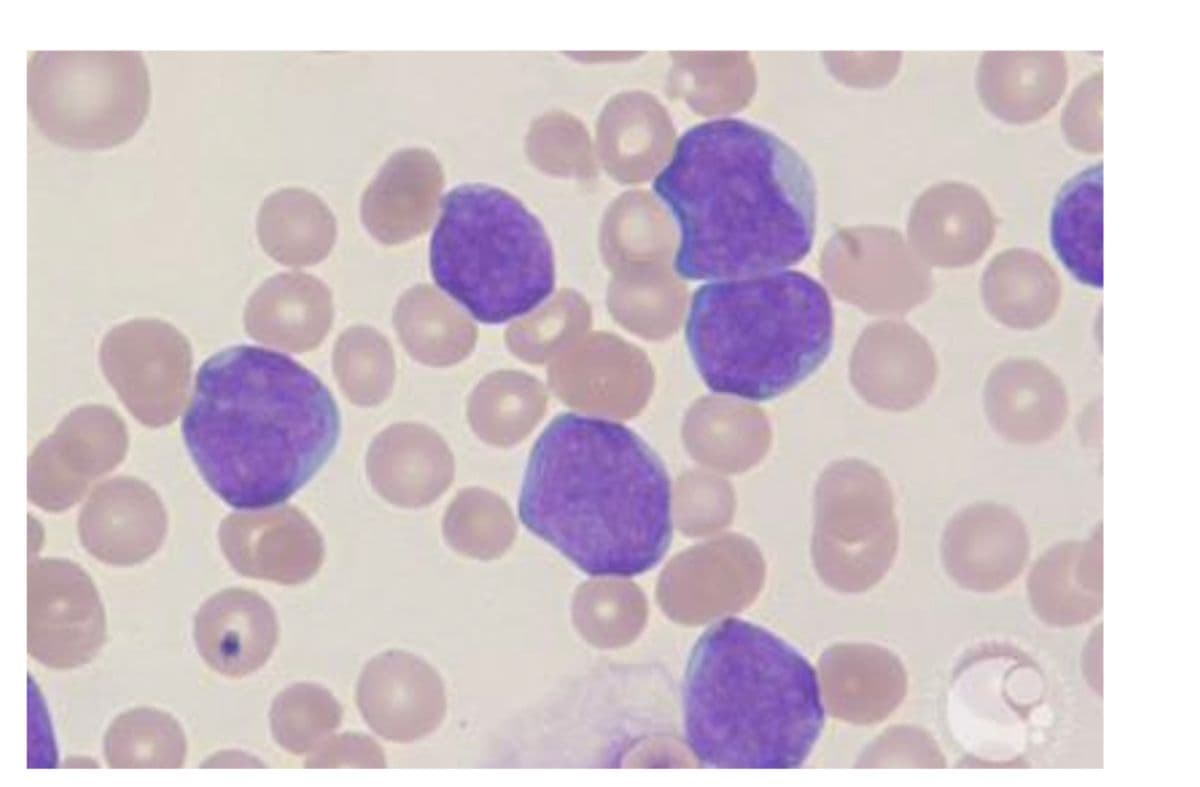A 3-year-old girl with a fever is sent to the hospital and is found to have a Pseudomonas sp. infection. Her platelet count was 60 x109/L, her haemoglobin value was 74 g/L, her white blood cell count was 1x109/L, and blast cells were seen on a peripheral blood film. Ninety percent of the cells in the bone marrow were blasts, according to a smear. Upon immunophenotyping these blasts using flow cytometry, positive phenotypes for CD10, CD19, (partial)TdT, and CD34 were observed.
A 3-year-old girl with a fever is sent to the hospital and is found to have a Pseudomonas sp. infection. Her platelet count was 60 x109/L, her haemoglobin value was 74 g/L, her white blood cell count was 1x109/L, and blast cells were seen on a peripheral blood film.
Ninety percent of the cells in the bone marrow were blasts, according to a smear. Upon immunophenotyping these blasts using flow cytometry, positive phenotypes for CD10, CD19, (partial)TdT, and CD34 were observed.


Step by step
Solved in 3 steps

What are the diagnostic, therapeutic and monitoring aspect of ALL? Then You need to find papers and data that supports and evaluates these (diagnostic, therapeutic and monitoring aspect) to be clear you have to talk about therpautic option, how its treatments and how its diagnosed and how its monitored, there need to EVIDENCE of evaluation of these methods and that means getting data that supports and evaluates why that that methods is being used? provide graphs and reference for the studies used to evaluate the point and evidence
What are the diagnostic, therapeutic and monitoring aspect of ALL? Then You need to find papers and data that supports and evaluates these (diagnostic, therapeutic and monitoring aspect) to be clear you have to talk about therpautic option, how its treatments and how its diagnosed and how its monitored, there need to EVIDENCE of evaluation of these methods and that means getting data that supports and evaluates why that that methods is being used?
what is happening in the cells and tissue that causes symptoms of ALL like anaemia, bleeding bone and joint pain, infection and fever, lymph nodes are sowllen etc? please go in depth in each symptom and explain well
how does ALL lead to the symptoms link the development of ALL to phycial symptoms (link what is happening in the cell and tissues that causes the symptoms that you end up seeing in patient) then list some symptoms and explain why theses symptoms would show in a patient (each syptoms separately) importana: need to be clear explanation on how these symptoms link to ALL and and what certain characteristics would be seen and why?
What are the diagnostic, therapeutic and monitoring aspect of ALL? Then You need to find papers and data that supports and evaluates these, You need to find papers and data that supports and evaluates one of these (maybe do therpautic option(diagnostic, therapeutic and monitoring aspect) to be clear you have to talk about therpautic option, how its treatmented and how its diagnosed and how its monitored, there need to evident of evaluation of these methods and that means getting data that supports and evaluates why that that methods is being used?
Explaining what ALL is and how it comes about and how it presents? the key changes and charateristics? And the cellular and generic change?
define ALL in great details and identify key markers and characteristics well. discuss cellular and genetic changes within the cells.
Present this disease and provide patient study data and evaluate the data clearly?
There should be comprehensive and succinct evaluation of diagnosis, therapeutic options and monitoring aspects of ALL, which emphasises and provides a well rounded evaluation rather than describtive text that lacks context range of relevance source. Clear links should be made between diagnoses and treatment of how develops and ALL
Can you give monitoring aspects, diagnoses and treatment more in depth which evaluate material and more details?
Can you speak more about ALL in particular rather than generic information?